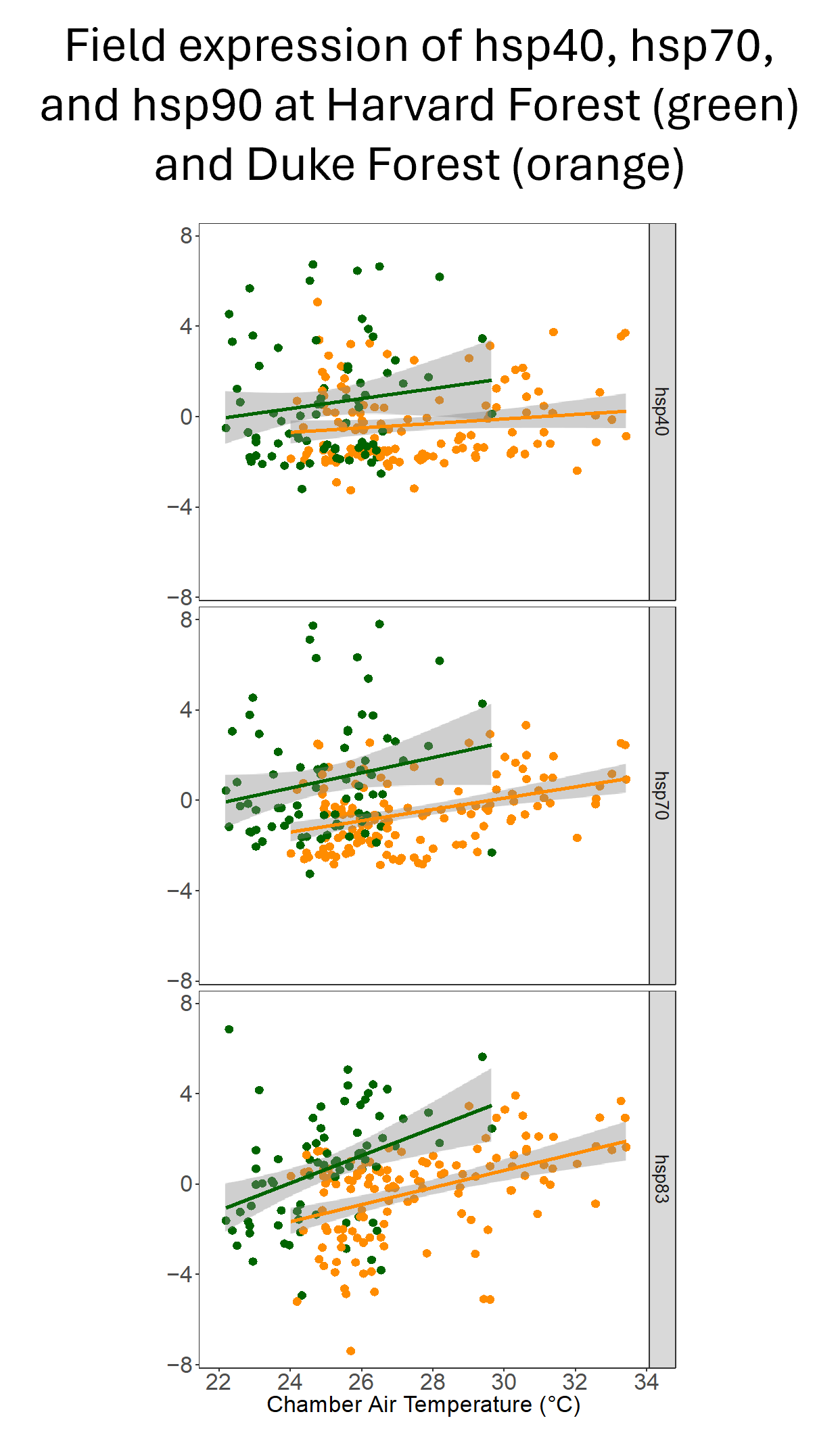How will northeast forest communities fare as the climate warms? Ants can help provide answers.
Forecasting how ecological communities and ecosystems will respond to global climate change is not a simple task: species and populations vary in their capacity to physiologically acclimate and evolutionarily adapt to changing conditions, and as they change, their interactions with other species in the community can be disrupted or lost.
Warming the forest
In this project, funded by an NSF Dimensions of Biodiversity award, the Helms Cahan lab teamed up with a group of community ecologists to understand how ant communities in eastern deciduous forests are likely to respond to projected warming over the next 50-100 years. We combined experimental manipulation of intact forest mesocosm plots at both Harvard Forest and Duke Forest with physiological and genetic analysis of the forest ant genus Aphaenogaster, one of the most common ant genera in forest habitats and a key disperser of the seeds of annual plants.
Results: vulnerability and resilience
We found that cool-temperature ant taxa like Aphaenogaster face a double-whammy from climate warming: they experience physiological stress during foraging when the temperature rises, and they are outcompeted for next sites by heat-loving competitors.
Despite these setbacks, we found evidence for both individual physiological defenses against the heat, and thermal adaptation to local conditions, which may enable this important member of the forest community to persist in the face of change.

